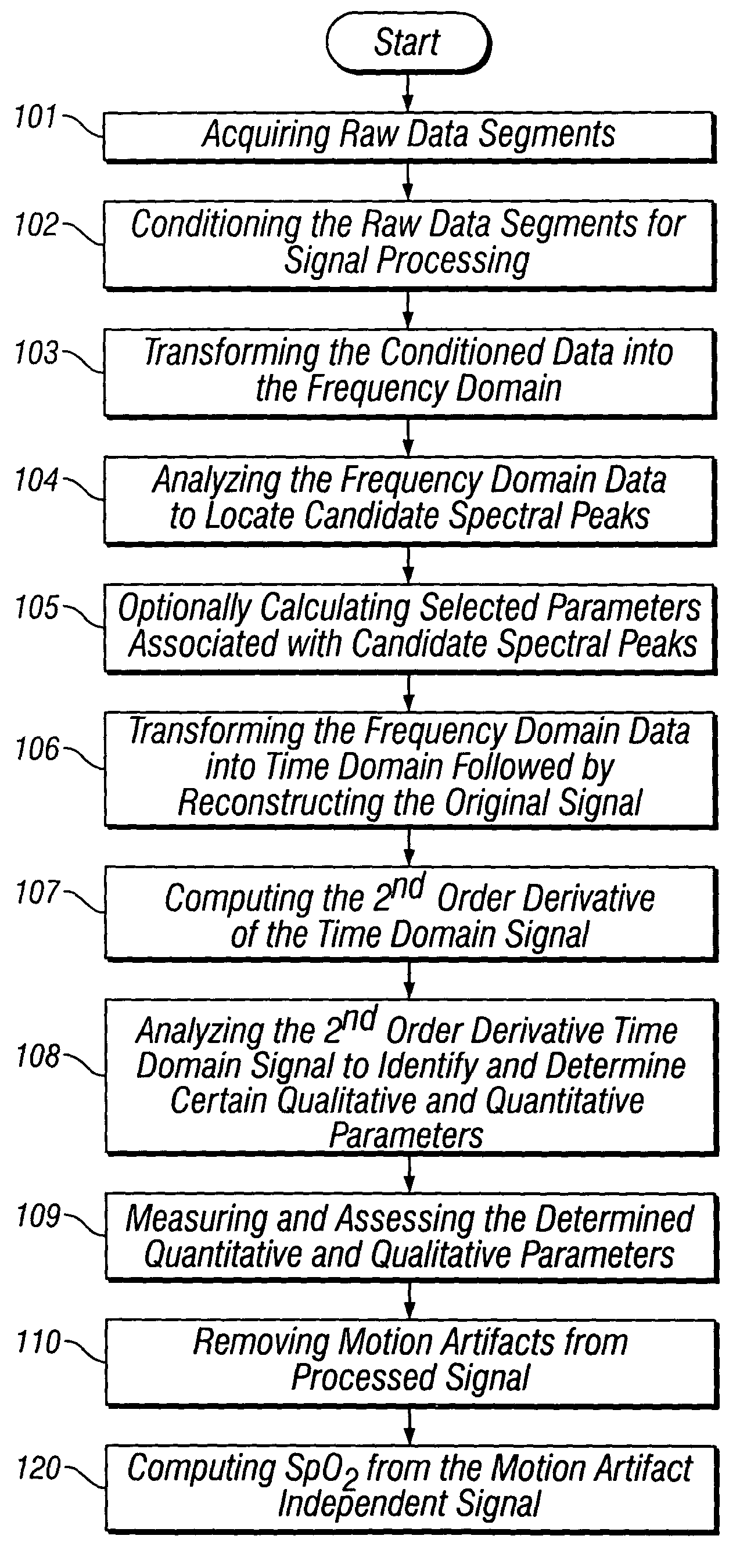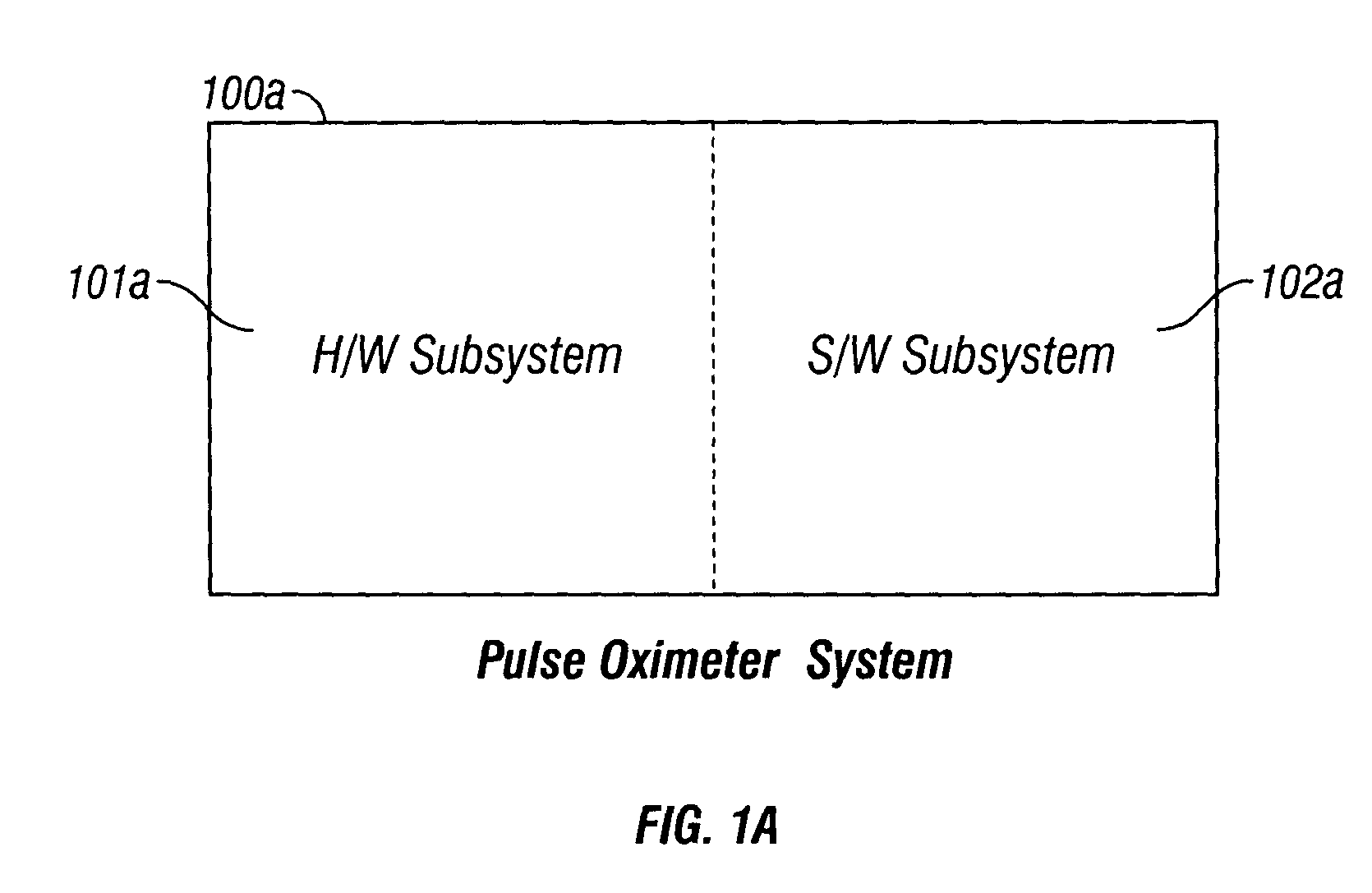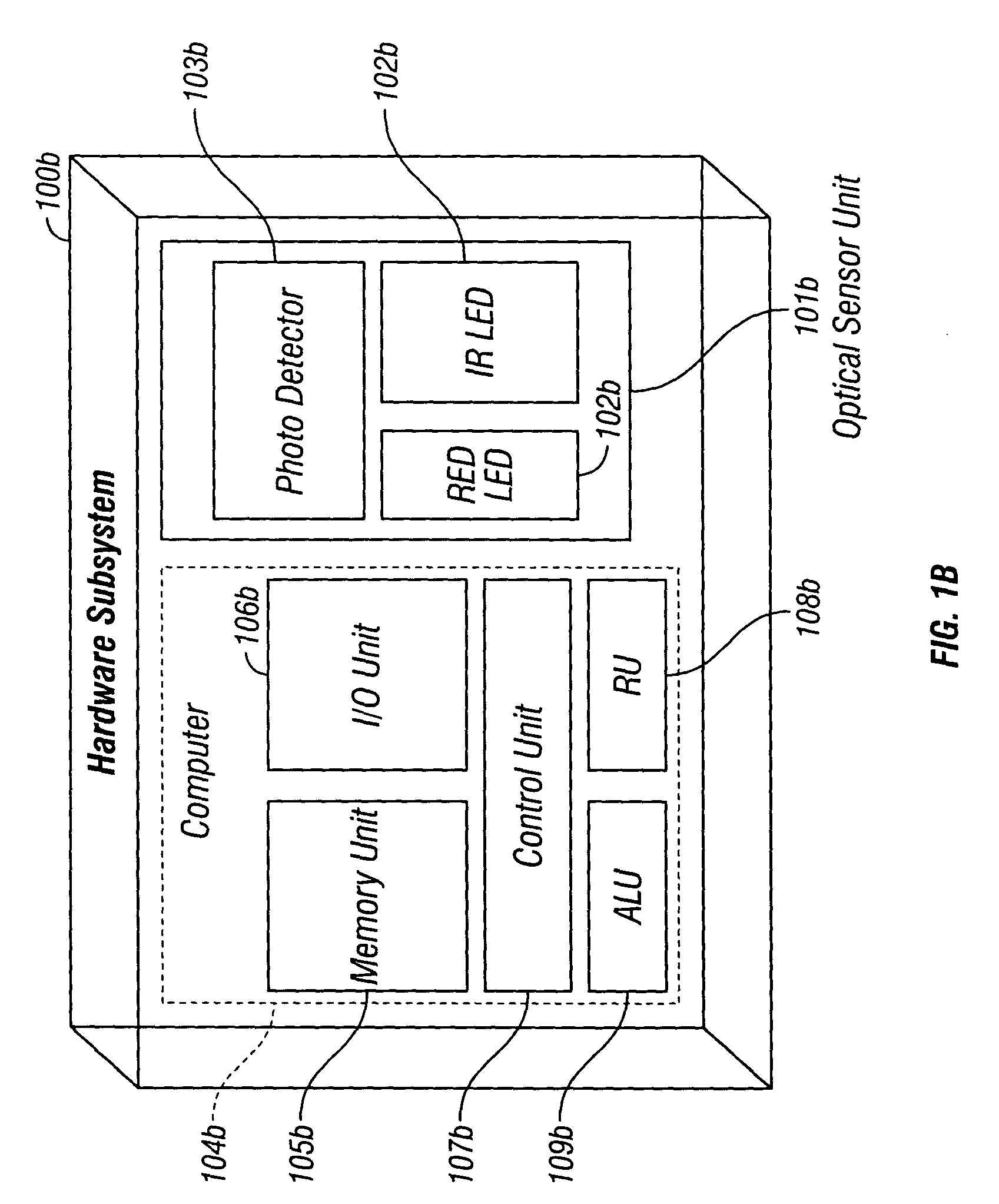Separating motion from cardiac signals using second order derivative of the photo-plethysmogram and fast fourier transforms
a technology of photo-plethysmogram and motion, applied in the field of physiological signals, can solve the problems of substantial disadvantages of existing ppg devices, substantial difficulty in oximeters, and degrade the signal-to-noise ratio
- Summary
- Abstract
- Description
- Claims
- Application Information
AI Technical Summary
Benefits of technology
Problems solved by technology
Method used
Image
Examples
Embodiment Construction
[0037]The present invention discloses methods and systems for removing asynchronous motion artifacts from synchronous cardiac signals by performing second order derivative processing of the measured photo-plethysmographic waveforms. The present invention will be described with reference to the aforementioned drawings. One of ordinary skill in the art would appreciate that the application described herein is an example of how the broader concept can be applied.
[0038]Referring to FIG. 1a, a system embodiment of the pulse oximeter 100a of the present invention is shown. The pulse oximeter system 100a comprises of a hardware subsystem 101a and an associated software subsystem 102a. The hardware subsystem 101a performs signal acquisition, followed by measurements and optional preconditioning. The software subsystem 102a is responsible for discarding motion artifacts from the acquired, measured and optionally preconditioned signal. Within the software subsystem 102a resides a method embod...
PUM
 Login to View More
Login to View More Abstract
Description
Claims
Application Information
 Login to View More
Login to View More - R&D
- Intellectual Property
- Life Sciences
- Materials
- Tech Scout
- Unparalleled Data Quality
- Higher Quality Content
- 60% Fewer Hallucinations
Browse by: Latest US Patents, China's latest patents, Technical Efficacy Thesaurus, Application Domain, Technology Topic, Popular Technical Reports.
© 2025 PatSnap. All rights reserved.Legal|Privacy policy|Modern Slavery Act Transparency Statement|Sitemap|About US| Contact US: help@patsnap.com



